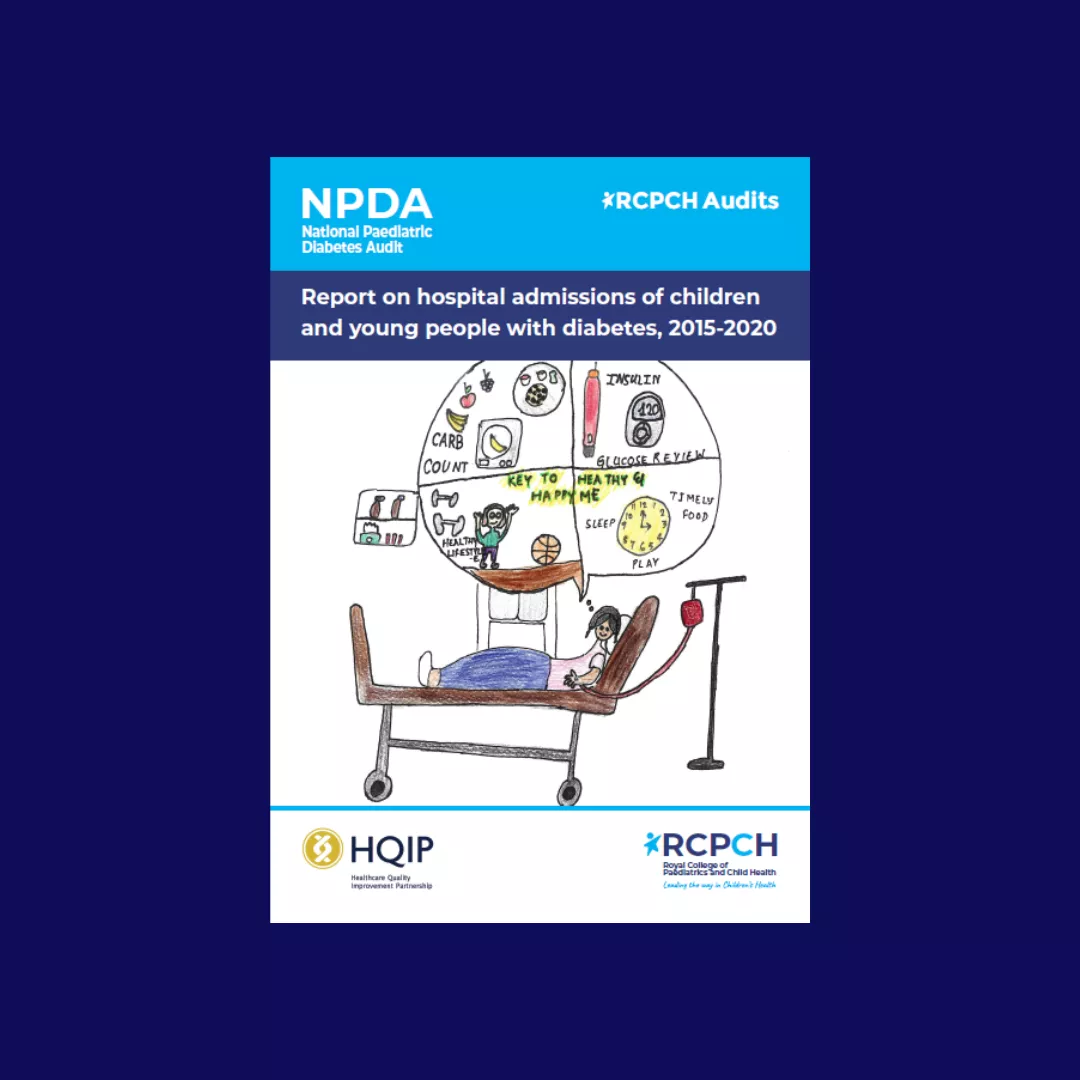The NPDA admission reports summarise acute emergency hospital admissions where the primary diagnosis is related to diabetes in children and young people cared for in Paediatric Diabetes Units (PDUs) in England and Wales.

2015-20 NPDA: Hospital admissions and complications report
This latest report provides additional analysis of admissions of children and young people with diabetes over five annual audit cycles from 2015 to 2020.
Between 1 April 2015 and 31 March 2020 there were 38,095 all cause diabetes-related admissions to hospital of children and young people receiving care from PDUs (paediatric diabetes units).
Key audit questions
- How many children and young people are being admitted to hospital each year with diabetes-related causes?
- Have there been changes to admission rates over time?
- Is there regional variation in hospital admission rates?
- What associations are there between use of diabetes-related technologies and admission rates?
You can download the full report in the Downloads box below, as well as earlier reports for 2012-15 and 2011-12.
Key messages from the latest report
- All cause admission rates remained constant in England and Wales despite a downward trend in national HbA1c from 2015-16 to 2019-20. However, there was considerable regional variability.
- Rates of diabetic ketoacidosis (DKA) at diagnosis of Type 1 diabetes increased over five years.
- Lower rates of admission with DKA, not at diagnosis, were associated with lower HbA1c and use of real time continuous glucose monitoring (rtCGM) in children and young people with Type 1 diabetes.
- Children and young people with Type 1 diabetes were more likely to admitted for diabetes-related reasons if they were female, of Black ethnicity or were living in more deprived areas, with longer duration of diabetes associated with higher risk of hypoglycaemia and DKA admission not at diagnosis.
- Statistical modelling of admissions for DKA post diagnosis and HbA1c >80 mmol/mol suggests that admission rates could be improved amongst children and young people with Type 1 diabetes in this HbA1c category by using an insulin pump and rtCGM.










